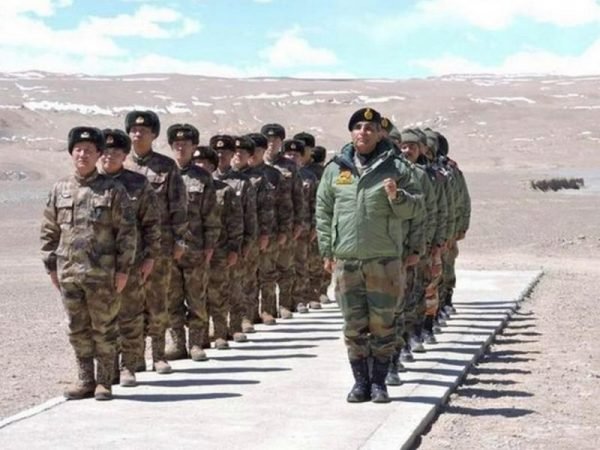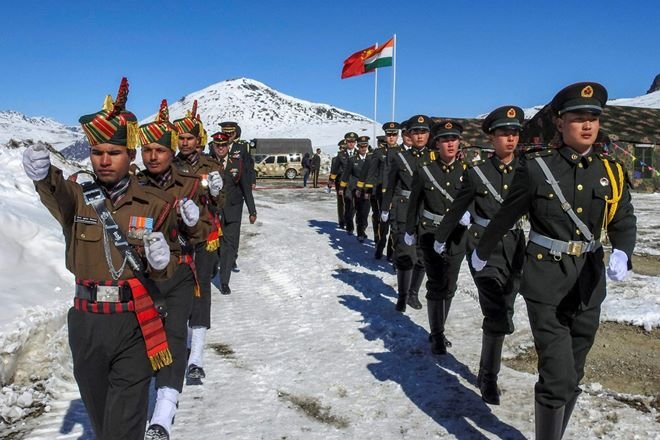Where Differences Become Dispute

Although the dragon has loomed large peacefully in recent decades, the sudden aggressive turnaround has created new concerns in the region.
During these hard times, when the whole world is grappling with COVID-19, the region of Asia-Pacific is witnessing a series of aggressive face-offs. This troublesome situation in the region has been arisen due to incessant clashes between China, on the one hand, and various other regional powers like India, Japan, Malaysia, and Vietnam etc., on the other. The violent clashes between Indian and Chinese troops across LAC (Line of Actual Control) in the Galwan Valley as well as Pangong Tso Lake, and Naku La in Sikkim, have raised temperatures in both New Delhi and Beijing. Most alarming among these skirmishes was of June 16, 2020, in which 20 Indian soldiers were martyred. These tensions between the two nuclear states, the alleviated nationalistic sentiments accompanied by rapid deployment of military troops from both countries along the Sino-India border, have enveloped the region with the fright of war.
However, the Indo-China border dispute is only a part of the larger picture. Indo-Pacific is observing the stresses in the region, where China has emerged as an aggressor. This is exemplified in various incidents which took place during recent months like pursuing of Japanese fishing boats by Chinese Coast Guards in the disputed waters where both China and Japan have their claims, the new national security bill for widening Chinese grip over the SAR of Hong Kong, which was witnessing a plethora of anti-China protests, thereby, curbing its autonomy and powers; forging Chinese vessels into the Malaysian and Vietnamese waters, and similarly aggressive actions towards Taiwan to “reunify” the autonomous territory into mainland China etc. All these warmongering actions by Beijing have gesticulated a complete and abrupt shift from its policy of “Heping Fazhan” or the “Peaceful Development”, initiated by President Hu Jintao. This policy of peaceful development was initiated in response to assure the world that China is a responsible rising power which believes in peaceful coexistence and harmonious relations with its neighbours. During recent years of its rapid economic growth, China has always stressed on the principle that any difference between China and other countries should not take a form of dispute. Although its recent actions in its neighbourhood depict a total departure from this policy of peaceful development, the reasons for which can be accounted many.
A Complete Departure
Chinese foreign policy has always been in transition. From Deng Xiaoping’s ‘Taoguang Yanghui (keep a low profile and never take the lead) to Jiang Zemin’s ‘Duojihua de Shijie’ (a multipolar worldview), and from Hu Jintao’s ‘Heping Fazhan’ (peaceful development) to current President Xi Xinping’s ‘The China Dream’, Chinese foreign policy has undergone various phases from ‘backdoor diplomacy’ to a peaceful rise to an expansionist ideology. The current President Xi Xinping’s ‘The China Dream’, which aspires to transform China into a wealthy, strong and modern global power by 2049, the centenary year of the Communist Revolution, has unto now been seen as an extension of the peaceful economic development policy, but recent incidents have totally changed these perceptions. Now China’s aggressive actions under the leadership of Xi Xinping are being viewed as an expansionary policy which doesn’t even hesitate to push the boundaries.

1. The Sino-India Conflict
The Sino-India border conflict has been continuous since the 1950s. after the 1962 war, the Indo- Chinese borders have remained peaceful for almost 45 years except for some key standoffs like Depsang in 2013, Chumur in 2014, and Doklam in 2017. However, this recent face-off at Galwan valley, Pangong Tso and Naku La is quite different from the previous ones. China treats the Sino-India border region according to a principle of ‘Five Fingers of Tibetan Palm’, constructed during the Mao era.
According to this construct, Chinese have treated the Xizang (Tibet) as its right palm and Ladakh, Nepal, Bhutan, Sikkim, and NEFA (North-East Frontier Agency) or Arunachal as the five fingers of this palm to liberate which is the responsibility of China. With India, roughly 4000 km. of China’s border is not clearly demarcated. While LoAC represents the status quo between the two nations, there are several disputed areas which are claimed by both. China’s recent intrusion into the Indian side of Galwan valley indicates towards a greater strategy to alter the status quo and push LoAC to the west of Shyok river while gaining control of Galwan Valley and the entire flank of Chip-Chap plains. Chinese PLA has long been trying too push the LAC as evident by the continuous Chinese intrusions in Demchok-Kuyul sector, Nagtsang, Nakung, and Lungma-Serding regions, a vast portion of which has been captured by it.
However, the recent clash at Pangong Tso lake and Galwan valley shows a pattern of PLA’s three-pronged strategy of attacking Sirijap in the north, Chuchul in the south and through lake waters in the middle in order to cut Indian access to Aksai Chin in the east and Shyok Valley in the north. If this becomes a reality, it will leave Indian territorial security vulnerable. Also, with its access to the southern side of Karakoram, by pushing India to the west of Shyok and south of Indus, it can get easy access to Tashkurgan, the point from where CPEC passes, through the Depsang corridor. Another strategy behind these aggressive attacks can also be to gain control of the waters of the Galwan as well as the Shyok river, which can serve the needs of the arid regions of Aksai Chin which is controlled by China.
Apart from all these, an increasing power differential between the two countries is also a key factor. The fact that India scrapped the Article 370 and made Ladakh as its Union territory can also be viewed as a provocative action. Although India’s position that all these constitutional amendments were internal matters of India and these do not change the situation at LAC or LOC, has not been taken well by Beijing and Islamabad. Following the move to bring Ladakh directly under New Delhi’s control, the expediated construction of approximately 260 km. long Shyok- Daulat-Beg-Oldie (DBO) road link has also added up to the tensions.

2. The South China Sea Equation
Apart from its growing conflicts with India, China is showing its power play in the geostrategic region of the South China Sea as well as in the East China Sea. The South China Sea has tremendous importance for China as well as other East Asian nations like Japan and South Korea. Owing to the fact that around one-third of global shipping are carried through the South China Sea, gaining control over it becomes of utmost importance for China. The PRC has already started taking control of the South China Sea from establishing various administrative blocks in these disputed waters, which are a bone of contention among China, Japan, S. Korea, Philippines, Vietnam etc.
The presence of the Chinese Navy in the strategic Malacca straits also indicate at its intensions to gain effective control over the gateway of south-east Asia and using it in its interests. Also, control over Malacca Straits or its proposed alternative Kra Canal will provide China easier access to the Indian Ocean from where it can counter the presence of U.S. and Indian forces, which have set up various bases in the Indian Ocean.
Conclusion
The recent reckless and aggressive Chinese actions can be seen in International Relations under the purview of the concept of ‘Thucydides Trap’ explaining Chinese actions as a result of its ambitions as a rising and revisionist power. As explained by Henry Kissinger, the former National Security Advisor and Secretary of State of USA, “Potential tensions between an established and a rising power are not new. Inevitably, the rising power impinges on some spheres heretofore treated as the exclusive preserve of the established power. By the same token, the rising power suspects that its rival may seek to quash its growth before it is too late.”
Although, the international politics is an unending struggle of power, in the new world order with the rise of multilateralism and globalization, peaceful coexistence and co-operation has become feasible and, in case of China, to maintain peace and stability in the South and East Asian regions, only these are the goals which it should adhere to, which is only possible when China will reappraise its principle that it should not let its differences become disputes.


















